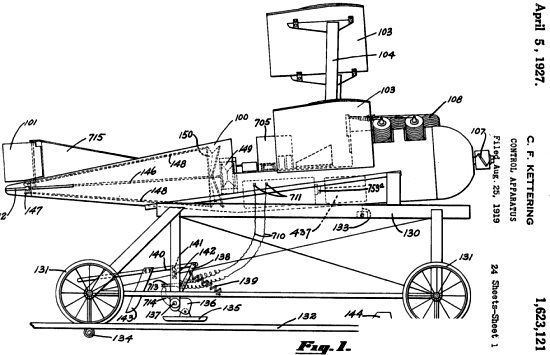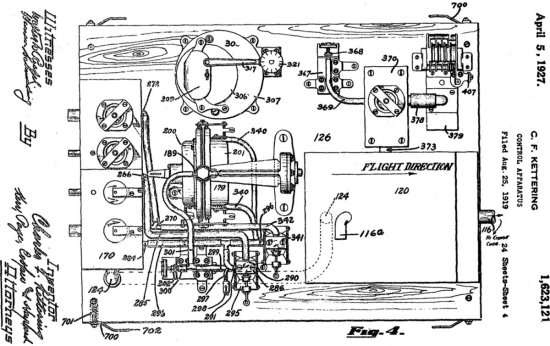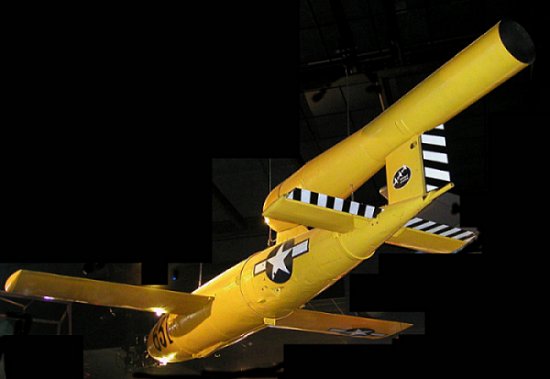Kettering's Buzz Bomb
Today, Kettering's Buzz Bomb. The University of Houston's College of Engineering presents this series about the machines that make our civilization run, and the people whose ingenuity created them.
On the occasion of my 75th birthday, the good people at our radio station gaveme the old issue of Automotive News that celebrated the75th anniversary of General Motors. And it included a remarkable article titled Boss Ket's 'buzz bomb'.
Boss Ket was Charles Kettering who, from 1920 to 1947, was head of research at GM. Kettering was an amazing inventor in an era of great inventors. He developed Duco paint and ethyl gasoline. He invented an incubator and a cure for syphilis, as well as the electric starter for automobiles.
Now he's invented a pilotless aerial bomb -- a biplane with a twelve-foot wingspan, meant to carry 185 pounds of explosives up to forty miles. Like the German V-1 Buzz Bomb in WW-II, it had no landing gear. It took off from a wheeled dolly. Unlike the V-1 it was driven by a propeller -- not a pulse-jet engine.
Kettering created the machine during the late years of the First World War. The controls were built in a strange conjunction between the Sperry Gyroscope and Aeolian Organ Companies. A Gyroscope was set to keep the airplane on track. It controlled the action of organ bellows, which set the elevator, rudder, and ailerons. It was a pretty complicated machine.
GM did a successful test of the device (which they called The Bug) just before the Armistice. But the Army remained interested, so GM went ahead and did a series of fourteen postwar tests at their Frigidaire plant in Dayton, Ohio.
Those tests were a symphony of mishaps. Everything that might've gone wrong did go wrong. In the first four trials The Bug crashed immediately on leaving the dolly. In the next four trials, it became airborne before it crashed. Then a military commission arrived to observe, and they got to see it crash two more times.
And so it went. The wings fell off, the controls didn't work, the engine failed. On the fourteenth flight it traveled almost twenty miles. Then the wings collapsed, and people lost interest.
After the Pearl Harbor attack, our government revived the idea and built a workable flying bomb -- now radio controlled, with a two-hundred mile range. But, since all our targets were too far away for the thing to be useful, they once more abandoned the idea.
The Nazis, on the other hand were able to launch their Buzz Bombs, then their V-2 Rockets, from the shores of Holland, two hundred miles from London. So, they did terrible damage to British civilians, without gaining any real advantage in the war.
So much for invention during war: Necessity has a way of scat-tering sand in the creative gears. Kettering and von Braun were two of the great inventors, and both displayed their brilliance in time of war. But, to bear fruit, inventive brilliance needs to feed upon, and be fed by, a public's desire for its benefits. And that is hard to come by when we're fighting for out lives.
I'm John Lienhard, at the University of Houston, where we're interested in the way inventive minds work.
(Theme music)
Boss Ket's pilotless 'buzz-bomb'. Automotive News, GM 75th Anniversary Issue, Sept. 16, 1983.

Kettering's pilotless guided bomb patent drawing. Note the date, 1927. He did note file and/or receive his patent until nine years after he'd first built it. For a a better view of the device, Click Here. 
The control system for Kettering's flying bomb.
A captured German V-1 Buzz Bomb, wearing American insignia. (At the Cradle of Aviation Museum, Garden City, Long Island, NY. Photo by John Lienhard)